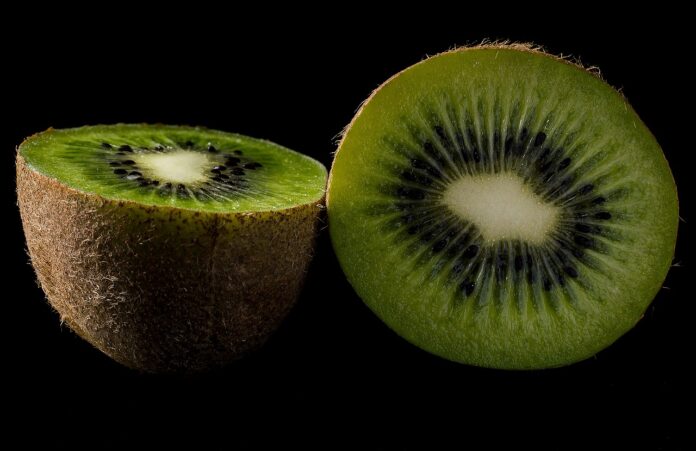Kiwi, also known as kiwifruit or Chinese gooseberry, is a small, vibrant fruit celebrated for its unique appearance and impressive nutritional profile. It is native to China, where it has been cultivated for centuries, but gained global popularity after being successfully grown and marketed in New Zealand. The fuzzy brown skin encases a juicy, green interior adorned with tiny black seeds, delivering a flavor that combines sweet and tangy notes.
Fascinating Facts About Kiwi Fruit:
- World’s Largest Kiwi Fruit: The record for the heaviest kiwi fruit was set in Italy in 2018, with a weight of 10.98 ounces (310 grams), grown by Guinness World Records holder Giuseppe Scozzari. It surpassed the previous record of 9.8 ounces (277 grams).
- Mass Destruction Incident: In 2024, New Zealand-based Zespri destroyed more than 1 million trays of kiwi fruit valued at around €19 million (NZ$34 million) due to a food safety incident. A mouse infestation was discovered aboard the vessel transporting the shipment to Europe. Fearing risks to public health and brand reputation, Zespri decided to discard all 5,000 pallets rather than attempt to salvage any of the fruit
- Zespri’s Export Growth: In 2024, Zespri prepared for its biggest-ever export crop, expected to ship over 250 million trays worldwide. This massive yield demonstrates New Zealand’s key role in the global kiwi market
- Kiwi is also called “Chinese gooseberry” and originated in Asia, particularly China, where it was known by names like monkey peach and sun peach. It wasn’t until the 20th century that kiwi began to be cultivated in New Zealand, which became a major producer.
- The scientific name of kiwi is Actinidia deliciosa, and it is botanically classified as a berry. Its small black seeds, around 1,400 per fruit, are a key feature of its composition.
- The largest kiwi-producing country today is China, which harvested over 1.8 million tons in 2014. Italy and New Zealand are also significant producers.
- Kiwi fruits are nutritional powerhouses. Just 100 grams of kiwi provide 92.7 mg of vitamin C, surpassing the daily requirements, and they are low in calories, with only 61 calories per 100 grams.
- Kiwi skins are rich in fiber and edible, though many prefer to peel off the fuzzy layer. Eating the skin increases the fruit’s fiber and antioxidant intake.
- Kiwi fruits contain an enzyme called actinidain, which breaks down proteins. This makes kiwi an effective natural meat tenderizer but can also cause milk to taste bitter when the two are mixed.
- The most common kiwi variety is ‘Hayward,’ named after the New Zealand horticulturist who developed it. It is prized for its sweet-tart flavor and bright green flesh.
- California is the only U.S. state that grows kiwi on a large, commercial scale, due to the favorable climate that mirrors parts of New Zealand and Italy.
- Kiwi vines are pollinated primarily by honeybees. This is crucial for fruit production, as kiwi plants are dioecious, requiring male and female plants for pollination.
- The fuzzy skin of kiwi fruits serves as a natural defense, protecting the fruit from insects and harsh weather. Some new varieties, like the golden kiwi, have smoother skin.
- Kiwi fruit vines are hardy and can withstand a range of climates, but they thrive in temperate regions. Cold can damage the vines, so they are often cultivated in areas with mild winters.
- Kiwi plants have been used in traditional Chinese medicine. Beyond the fruit, the leaves, vines, and roots have applications, such as treating fevers or acting as diuretics.
- New Zealanders first started marketing kiwi as “kiwifruit” in the 1960s to avoid association with the high import duties imposed on Chinese goods. The name was inspired by the kiwi bird, a national symbol.
- The kiwi bird itself has poor eyesight but compensates with a strong sense of smell, a unique trait among birds. The fruit was named after this flightless bird due to their visual similarity.
- There are more than 60 varieties of kiwi, ranging from green to golden and even red-fleshed types, each with distinct flavors and characteristics.
- Kiwi fruit’s high vitamin C and antioxidant content help combat aging, boost the immune system, and reduce the risk of chronic diseases, such as heart disease and cancer.
- In addition to health benefits, kiwi’s actinidain enzyme also helps with digestion, breaking down proteins and aiding nutrient absorption.
- Kiwi fruits can be frozen and preserved for later use in smoothies or desserts, but freezing slightly alters their texture, making them softer when thawed.
- Although primarily enjoyed raw, kiwis can be used in a variety of culinary dishes, including jams, tarts, and salads. They even appear in savory dishes to balance out flavors.
- Kiwi vines can be surprisingly strong and are sometimes used for practical purposes in rural areas, like making ropes from the fibrous vines.
